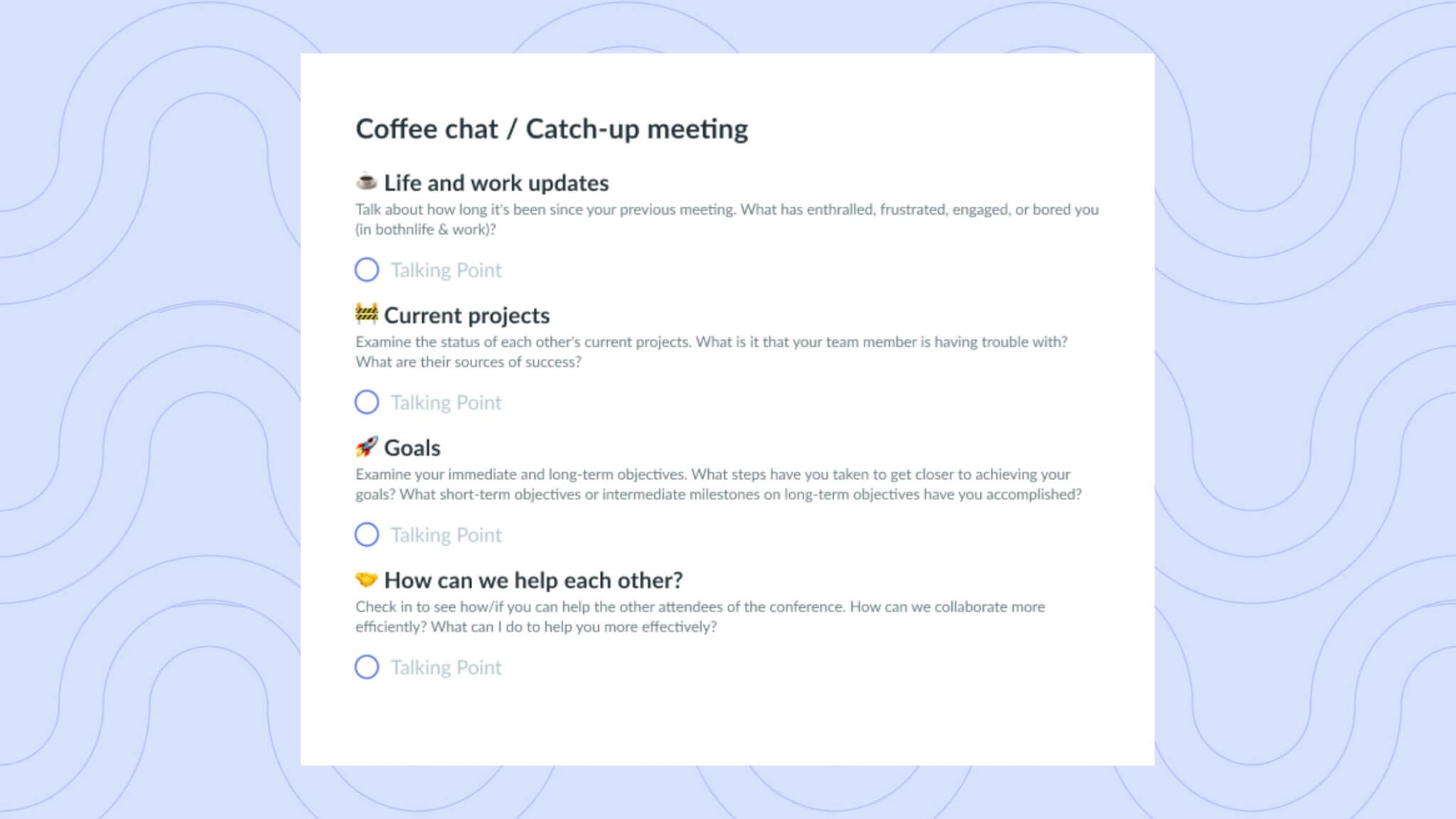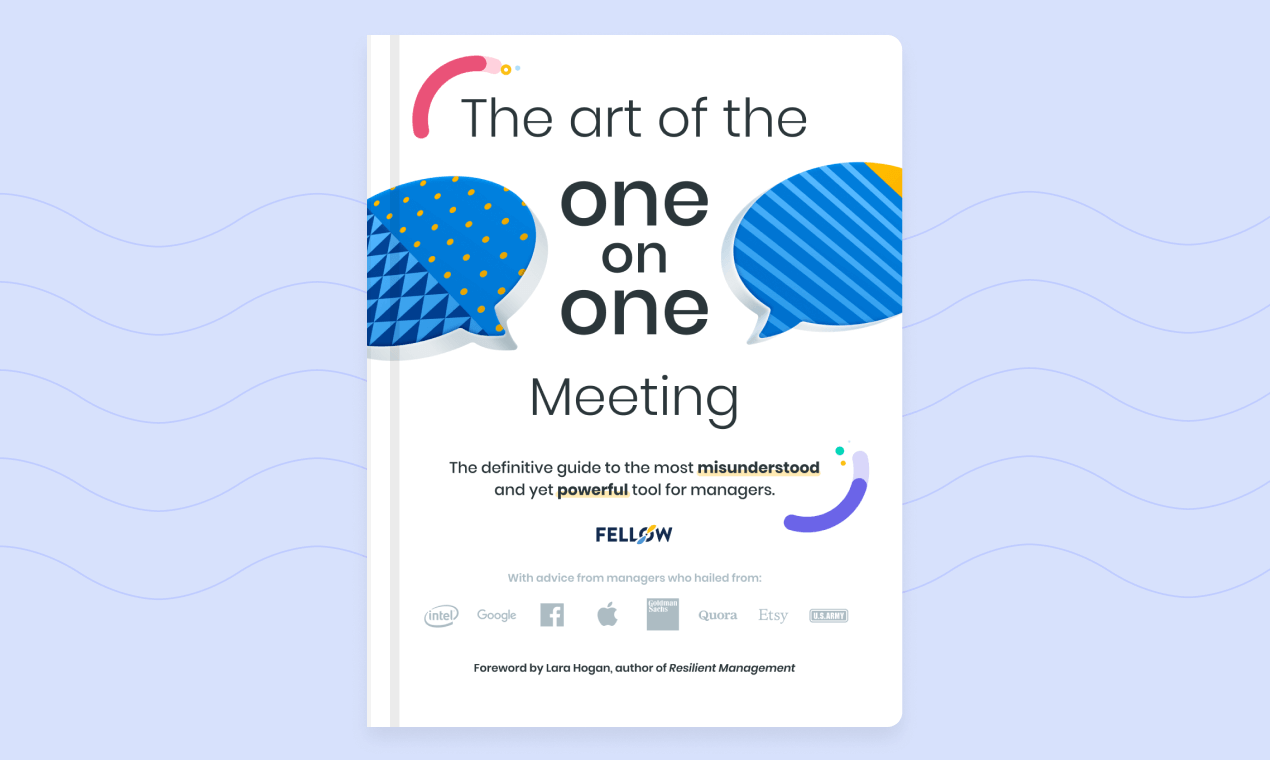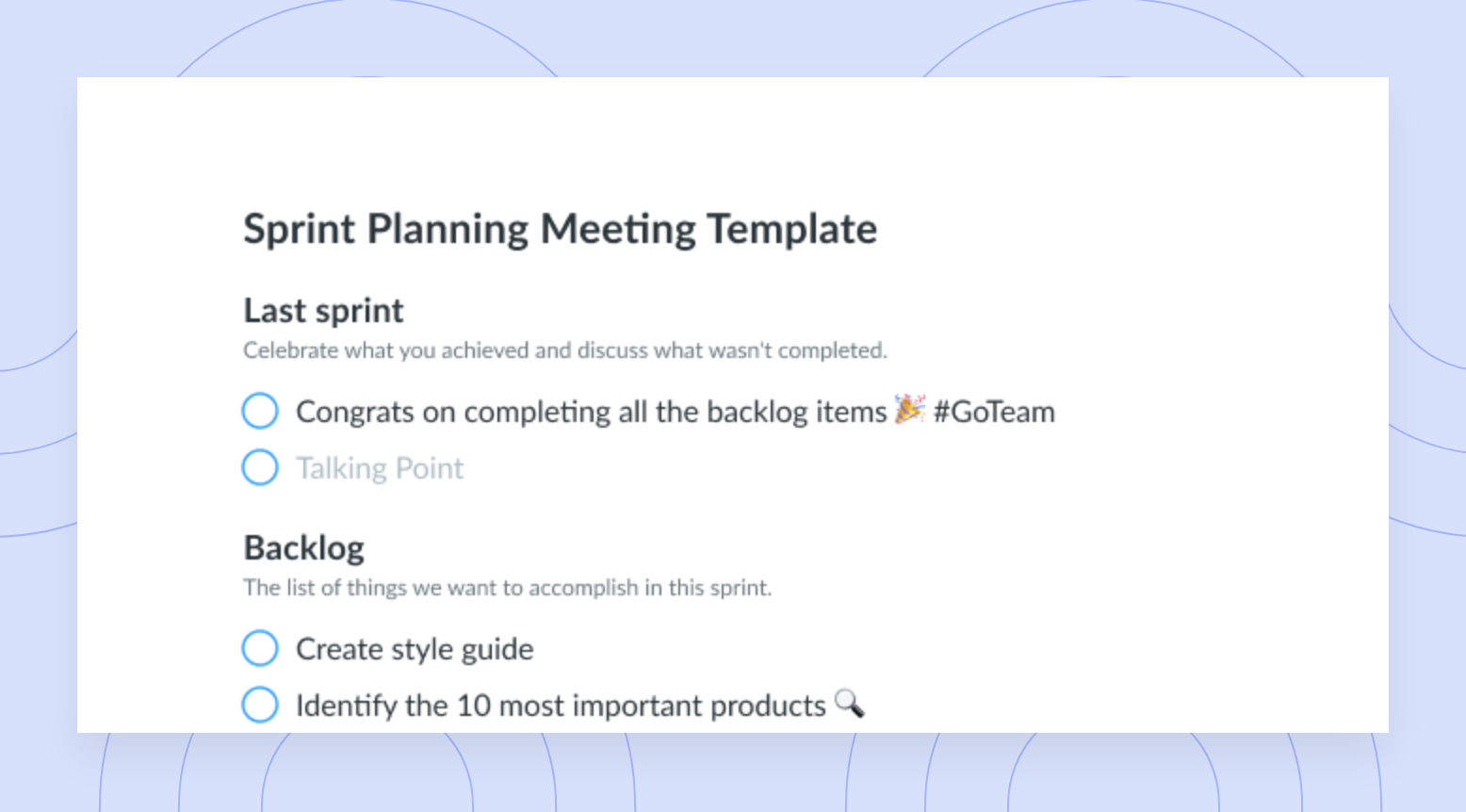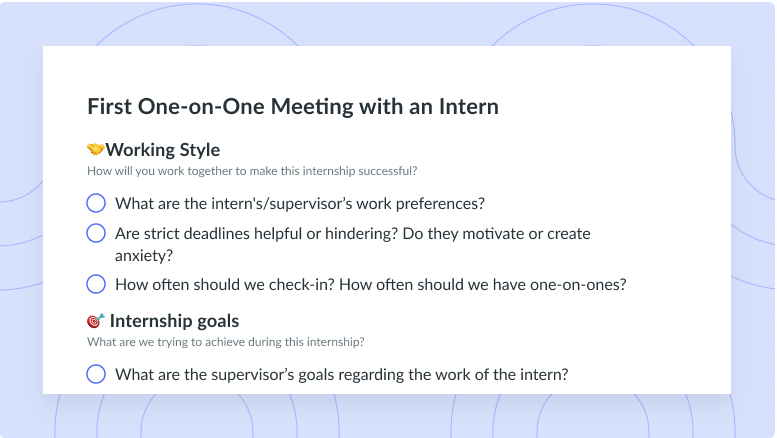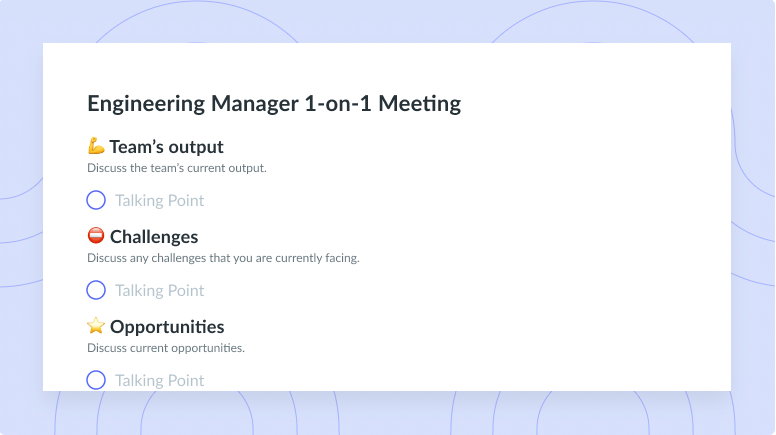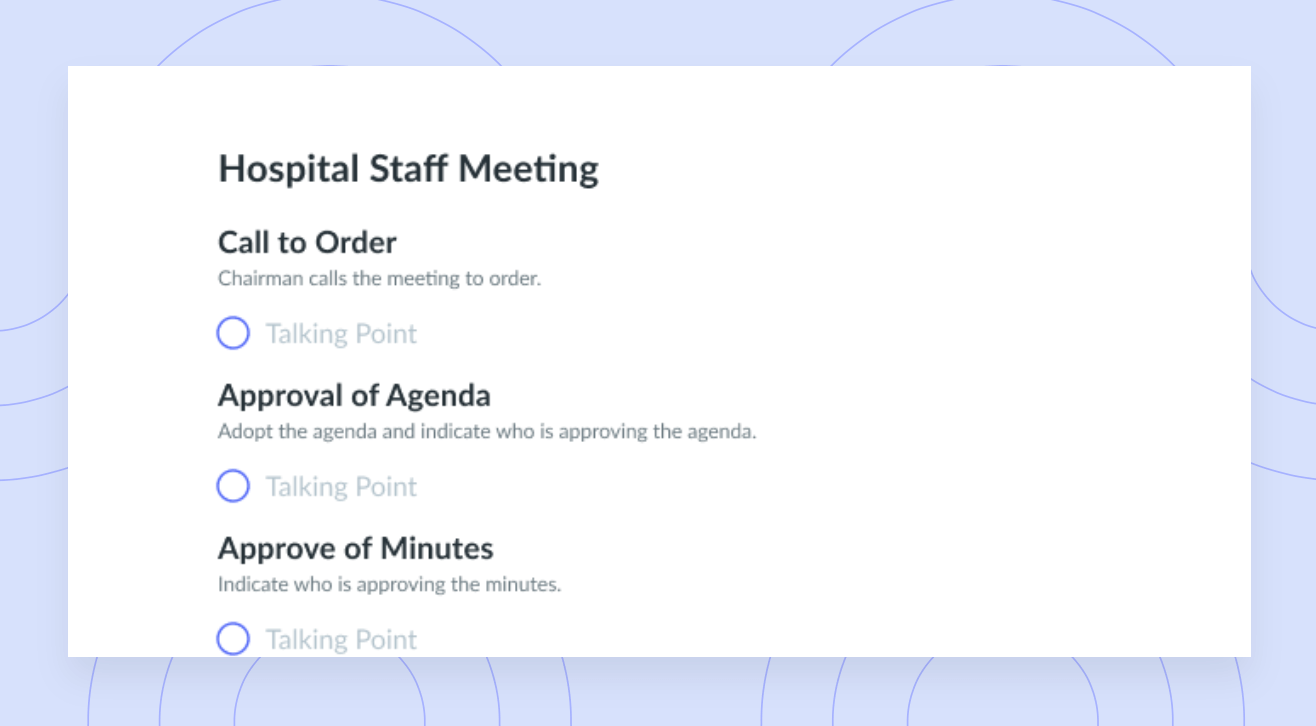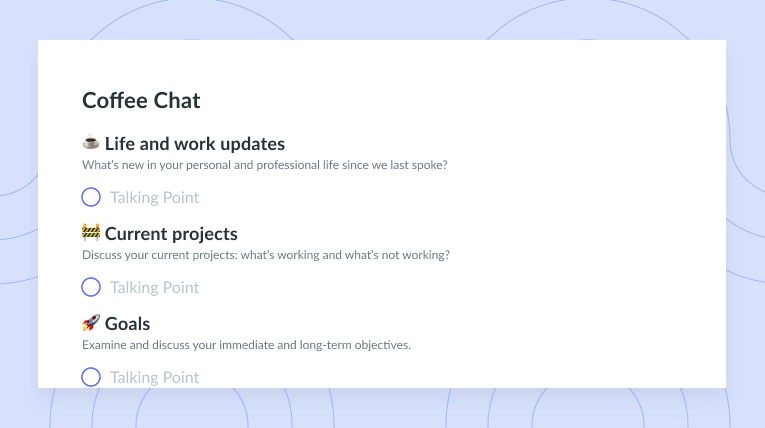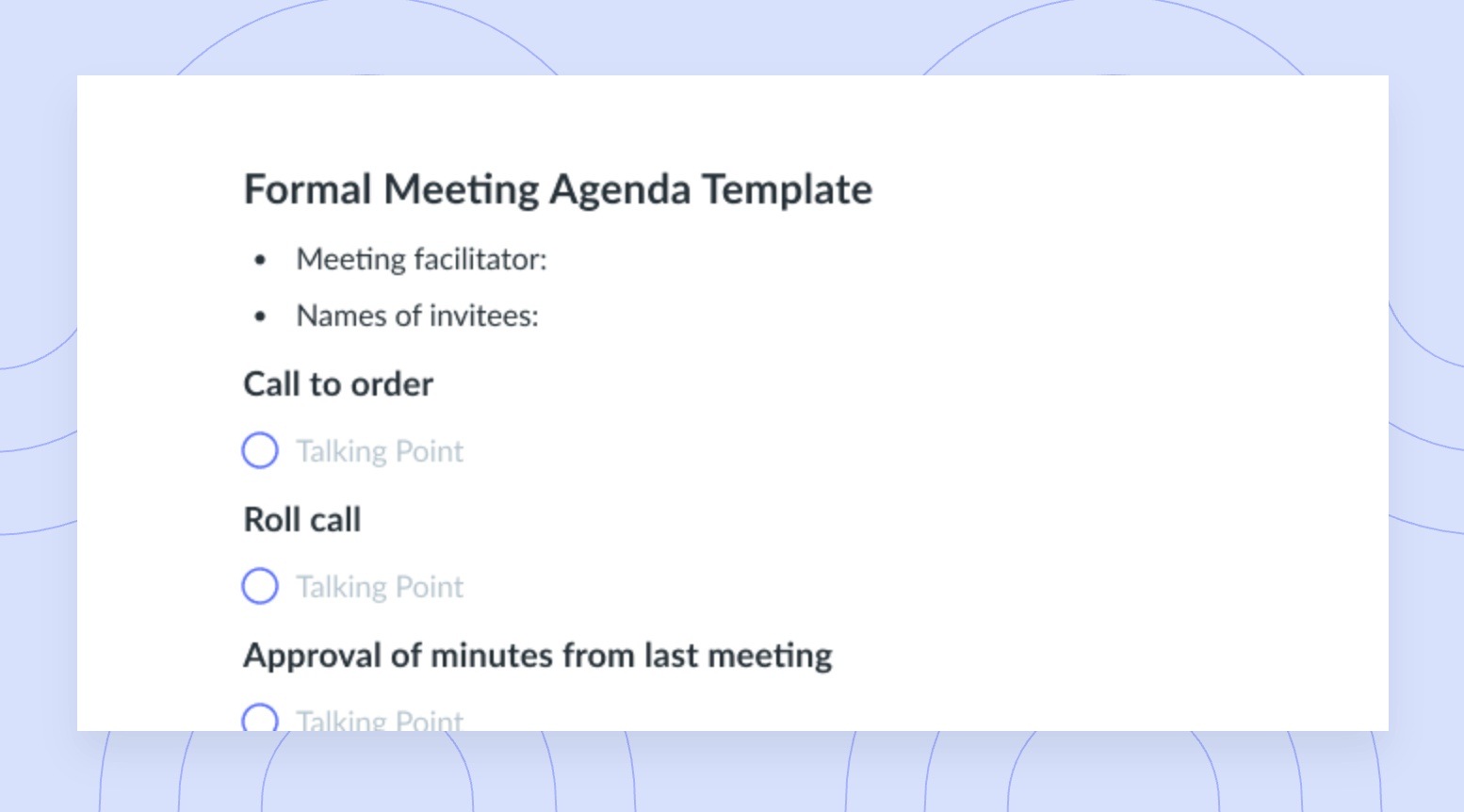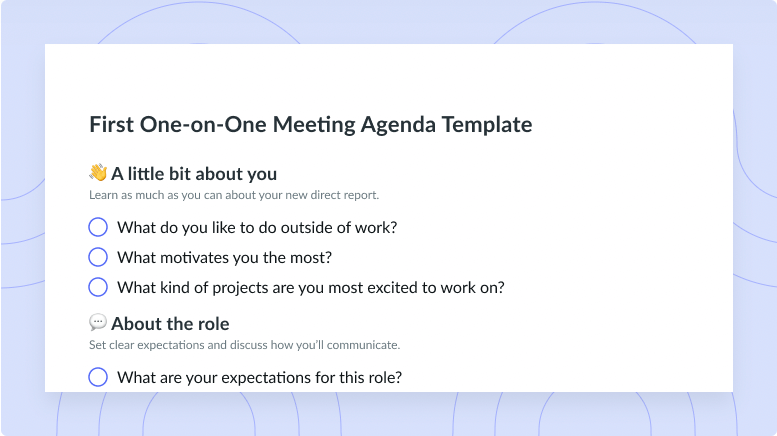Meeting Doomsday: Get Your Valuable Time Back
A meeting doomsday will refresh your calendar and leave you and your team feeling more productive and ready to take action.
If you feel like you’ve been attending more meetings and working longer hours than before the pandemic, you’re not alone. A recent Harvard Business School study including over three million participants found that the average workday increased by over 8%—equivalent to almost an hour more working time per day—and people also found themselves attending more meetings than before. Raffaella Sadun, Professor of Business Administration in the Harvard Business School Strategy Unit, shares:
“There is a general sense that we never stop being in front of Zoom or interacting. It’s very taxing, to be honest.”
Because more meetings and longer working hours can be overwhelming and unenjoyable to employees and management, it’s important to reconsider if all of the meetings you attend are necessary. A meeting doomsday is a means to get wasted time back and to redirect energy to more important tasks. This article covers everything you need to know about a meeting doomsday so you and your team can eliminate unproductive meetings and use your valuable time more effectively.
What is a meeting doomsday?
A meeting doomsday is a meeting that consists of identifying meetings that have become less productive over time and reevaluating the need for them. Together, you and your team identify unproductive meetings and remove them from your calendars so that you eliminate clutter so that you can focus on what really matters to the organization and to your productivity. A productive meeting is one in which you come out of with less meeting time than before and where you and your team feel at least somewhat less overwhelmed. In this sense, a meeting doomsday is a way to regain wasted time and refocus yours and your teams’ energy towards being more productive and more effective.

Meetings worth showing up to
A well-run meeting can foster communication and collaboration by including an agenda the whole team can contribute to. Try using a tool like Fellow!

How to conduct a meeting doomsday
- Conduct a meeting audit
- Inform employees
- Remove all future recurring meetings and assess
- Wait 48 hours
- Reschedule necessary recurring meetings
- Consider asynchronous meeting options
- Document the findings
- Make the meeting doomsday a recurring event
1 Conduct a meeting audit
First, conduct a meeting audit. A meeting audit is a pulse check you and your team should do on all the meetings in your calendar in which you take part on a recurrent basis. When you do the audit, you’ll establish whether a meeting is being held at the right cadence and whether the time spent within the meeting feels productive and effective. It’s sometimes difficult to gain a perspective on how much time is being wasted in meetings, especially when they’re occurring at different cadences. To avoid having a distorted view of how much time you and your employees spend in meetings, conducting a meeting audit is necessary. Here’s a meeting audit template that you can try with your team:
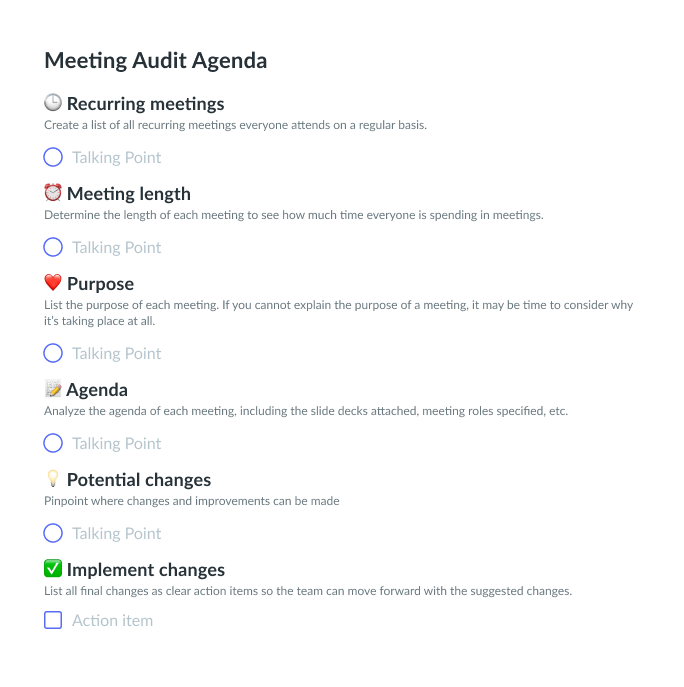
2 Inform employees
Communication is central to any high-functioning business. It’s extremely important to inform employees of when the meeting doomsday will happen so they have lots of time beforehand to look through their own meeting commitments and determine which recurring meetings they feel are no longer productive or beneficial. You should also inform your team about what is required of them for the doomsday meeting and what they can expect from it. It may be a good idea to circulate a meeting agenda before your doomsday meeting so everyone is on the same page and so you can get the most out of your meeting.
3 Remove all future recurring meetings and assess
After you and your team have identified which recurring meetings are no longer productive, remove them from your calendar. Get in touch with anyone who may not have been in the doomsday meeting so you can let them know why the meeting has been canceled. Once you’ve removed the future recurring meetings, take some time to assess the impact of this added free time. The assessment can include a discussion about what this newly freed-up time will be used for, or how you may be able to cover the content of the canceled meeting in a different, more effective way.
4 Wait 48 hours
You and your team should use a 48-hour rule to sit with the newly freed-up calendar time, let it sink in, and think about how your time can be better used. Afterwards, you can ask your team to repopulate their calendars, but only with meetings that are completely necessary and that add value according to the original or re-worked meeting audit. This 2-day pause will allow you and your employees to really think about how the deletion of certain meetings will affect productivity. It will also allow the time to brainstorm how to better make use of your time to achieve the company’s desired goals or results.
5 Reschedule necessary recurring meetings
If you’ve completely wiped your calendar, now you’ll need to reschedule necessary recurring meetings in a different format. While you may still need these meetings to take place, it’s important to now think about how you may be able to conduct them differently going forward. Perhaps you can conduct a certain meeting on a monthly basis, or perhaps it’s more effective to have the meeting occur on a weekly basis but to cut the meeting time in half. Regardless of how you choose to modify your must-have meetings, make sure that they’re adding value and being conducted in the most effective way possible so you and your team get the most out of them.
6 Consider asynchronous meeting options
Another way you can consider modifying your necessary recurring meetings is by thinking about asynchronous meeting options. Not all meetings need to be held live, and because so many employees now work remotely and sometimes in different time zones, asynchronous meetings offer many benefits. Giving employees the flexibility to attend a meeting when it suits them not only promotes autonomy but also provides a great opportunity for them to schedule their own day in a way that’s the most productive for them. If an asynchronous meeting would meet your team’s needs, this could be a great option to explore.
7 Document the findings
Regardless of the way you conduct your doomsday meeting, be sure to document the findings so you and your employees can look back on them. With Fellow, you can use the meeting agenda software to plan, collaborate on, and create your doomsday meeting agenda so you stay on track and on time. Not only can you create a helpful meeting agenda, but you can also assign team members to specific tasks with associated due dates and ask your team for feedback. Having everything in one place will make your doomsday meeting more effective. Moreover, you can look back on your findings later to track your progress over time and ensure you’ve achieved what you set out to do.
8 Make the meeting doomsday a recurring event
The last piece of the puzzle is making the meeting doomsday a recurring event. This way, you and your team can regularly review the meetings you attend and ensure that they are worth your time and that they continue to provide value to the organization. The doomsday meeting isn’t the type of meeting that needs to happen weekly, but it would be reasonable to host a meeting doomsday annually. This way, any meetings to which you and your team have committed throughout the year can be revisited and audited to ensure they’re completely necessary.
Parting advice
Since we now know that employees are working longer hours and attending more meetings than ever before, it’s important that leaders are more aware and more reasonable with what they expect of their employees. In a recent Harvard Business School article concerning how managers can be more mindful, Professor Raffaella Sadun from the Harvard Business School shares three main points of advice:
“Empathize with workers’ unique circumstances. Managers need to know what their employees are juggling to provide the right professional support.
Focus on output, not hours. It’s virtually impossible to track how employees are actually using their time. Instead, managers should focus on the quality of their work.
Expect wide differences in productivity across employees, for now. While some people find working from home energizing, many employees probably won’t be able to be as effective as they would be under normal conditions.”
As always, it has been a pleasure to see you back on the Fellow Blog. If you enjoyed this article, be sure to share it with a friend or a colleague!



